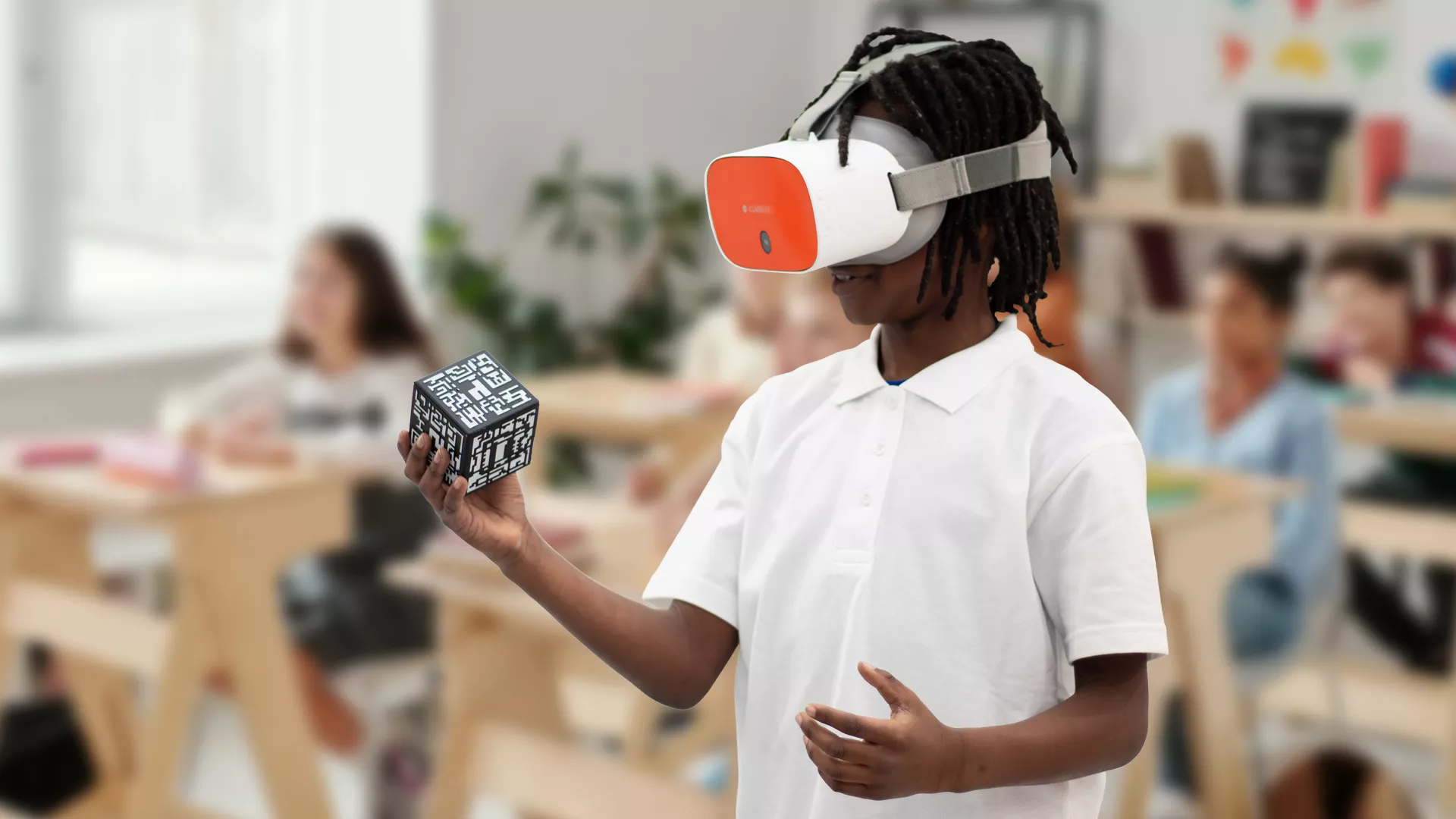Social and emotional learning (SEL) skills such as learning how to form healthy relationships, how to manage one’s emotions, how to understand others’ perspectives and show empathy, and more, are important foundational skills that can set students up for success both in and out of school. Strong SEL skills help students in their daily activities and interactions, can have a positive impact on students’ academic success, and are also some of the main skills that employers say they look for when vetting potential employees.
Teachers can support SEL instruction in the classroom through SEL-specific curriculum, activities and programs. However, another way to support SEL that may not immediately come to mind, is through use of technology. Virtual reality (VR) technology, specifically, can be a powerful way to promote social and emotional learning in a number of areas.
Developing empathy through emotional engagement
The immersive and multisensory nature of VR can evoke strong emotional responses and feelings of presence, facilitating empathy and compassion toward others. The experiences can elicit empathic emotions such as concern, sympathy and care for virtual characters or scenarios depicted. The ability to empathize with others is a key component of social awareness, a core SEL competency and is an important skill to have in today’s world. An article in EdTech Review described a Stanford University study that “discovered that people who underwent a VR experience that enabled them to experience what it would be like to lose their jobs and homes were more empathetic toward homeless people, compared to getting this exposure through other media (such as books, TV shows or traditional films). In one of the studies, 85% of VR participants signed a petition to help homeless people in comparison to 63% who read a narrative about homelessness.”
Understanding the perspectives of others
Another key aspect of social awareness is being able to understand the perspectives of others. VR can help students do this by allowing them to virtually step into someone else’s shoes and experience situations from that perspective in an immersive way. This enables students to deeply understand and imagine another person’s thoughts, feelings and experiences which studies show can impact their behavior. The EdTech Review article noted, for example that in one study, participants who engaged in a VR simulation of what it was like to be colorblind were likely to spend more time helping someone with the same condition after the study than those who just imagined they were colorblind, but didn’t do the VR experience. Another study found that having someone become a superhero through a VR experience made them more helpful in a real-life situation following the study.
Supporting inclusivity
Building students’ SEL skills can help schools create inclusive educational environments. VR can support this work by engaging students in experiences that can help reduce biases and help them understand neurodiversity. One school, for instance, gave neurotypical students an opportunity to use VR headsets to immerse themselves in an experience that simulated what it would be like for a student with autism to experience a sensory overload. The experience helped them understand and respect the challenges faced by their neurodiverse peers and helped foster a culture of inclusivity and support. Another school which serves students on the autism spectrum, uses virtual reality in a similar way for professional development. The experience helps staff better understand their students’ needs.
Building resilience
Resilience refers to a student’s ability to persevere through difficult challenges and can help a student succeed in school despite setbacks. Students can use VR to practice resilience-building techniques and SEL skills such as self-management through simulations that expose them to stressful or emotionally challenging scenarios in a controlled way. This allows them to practice emotional regulation and stress management techniques, building resilience to help them cope with real-life adversities. VR can also help students self-regulate through specific scenes or experiences that are designed to promote calm and focus. For instance, students can immerse themselves in a calming scene and go through a guided meditation, or simply watch waves lapping the shore of a serene beach. The school for students with autism uses this method when a student has difficulty with self-regulation. For instance, one student is calmed by swinging on a swing. Because the school is in New Hampshire, going outside to swing is not always an option. To help this student, staff filmed 360-degree footage from the vantage point of swinging on a swing. Now, when the student is feeling agitated, they can put on a VR headset and immerse themselves in that virtual experience to be calmed without needing to leave the classroom.
Developing relationship skills
VR can be used to support communication and teamwork, which are key components of the core SEL competency of relationship-building. For example, virtual reality can be used to create shared virtual spaces for students to learn and interact with each other, irrespective of their physical location. This enables students to work on projects, conduct experiments, or solve problems together in a virtual environment. This promotes collaborative learning, and fosters teamwork and communication skills. VR can also supplement group work done in the classroom. For instance, students can work in teams on designing a VR experience and then they can collectively explore the experience through the use of VR headsets.
When it comes to supporting student success, teachers seek out all means available. By using both traditional SEL practices while leveraging innovative technologies such as virtual reality to support SEL, they help create conditions where students will thrive in and out of school.
About the Author

Chris Klein is a former teacher and technology coordinator who now serves as vice president of educational services for Avantis Education, creators of ClassVR. Klein is a digital evangelist and a strong believer that classroom technology should be engaging, teacher-focused, easy to implement, and safe. His experience has included teaching, creating and implementing video broadcast curriculum, and designing and winning grants for 1:1 device programs in schools. He was recognized as an Apple Distinguished Educator and has presented at local and national education conferences and led professional development for teachers, administrators and school board members. He has also worked with edtech companies, including LearnPad, and SMART Technologies.
Join Us Today


